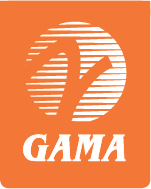|
GAMA Presents 2017 Year-End Aircraft Shipment and Billings Numbers at Annual Press Conference
Washington, DC – The General Aviation Manufacturers Association (GAMA) today released the 2017 year-end aircraft shipment and billings numbers at its “State of the Industry” press conference.
GAMA Chairman Phil Straub, Executive Vice President and Managing Director of Garmin Aviation, announced that airplane shipments globally increased 2.5 percent from 2,268 units in 2016 to 2,324 units in 2017 from the same reporting companies. Conversely, airplane billings declined 4.2 percent, from $21.1 billion to $20.2 billion. Worldwide rotorcraft shipments rose 7.5 percent, from 861 units in 2016 to 926 units in 2017. Rotorcraft billings increased by 1.4 percent, from 3.6 billion in 2016 to 3.7 billion in 2017.
Notable from these numbers is that the rotorcraft segment stabilized after several years of declining deliveries. Piston rotorcraft experienced the largest increase of all segments at 264 unit deliveries compared to 224 in 2016, a 17.9 percent increase. Preliminary turbine rotorcraft data also indicates an increase of 3.9 percent, to 662 aircraft delivered.
Business jet airplane deliveries grew slightly, by 1.3 percent, rising from 667 to 676 units. Driving this growth are the several new aircraft models that entered into service in 2017. Turboprop deliveries slowed to 563 airplanes, compared to 582 deliveries in 2016; a 3.3 percent decline, while piston airplane shipments strengthened by 6.5 percent, to 1,085 units.
“The 2017 year-end results were encouraging, especially with the delivery growth we saw in the business jet, piston airplane and rotorcraft segments,” said GAMA President and CEO Pete Bunce. “Looking ahead, we’re optimistic given some very positive economic indicators, stabilization in the used business aircraft market, new manufacturing techniques spurred by additive manufacturing, and innovative aerospace technologies driving urban air mobility platforms, electric and hybrid propulsion, unmanned aerial vehicles and commercial space.”
| Segment |
2016 |
2017 |
Change |
| Piston Airplanes |
1,019 |
1,085 |
+6.5% |
| Turboprops |
582 |
563 |
-3.3% |
| Business Jets |
667 |
676 |
+1.3% |
| Total Airplane Units |
2,268 |
2,324 |
+2.5% |
| Total Airplane Billings |
$21.1B |
$20.2B |
-4.2% |
| Piston Rotorcraft |
224 |
264 |
+17.9% |
| Turbine Rotorcraft(*) |
637 |
662 |
+3.9% |
| Total Rotorcraft Units |
861 |
926 |
+7.5% |
| Total Rotorcraft Billings |
$3.6B |
$3.7B |
+1.4% |
(*) Leonardo Helicopters released fourth-quarter results on March 14, 2018. GAMA has updated the 2017 report online at: https://gama.aero/facts-and-statistics/quarterly-shipments-and-billings/
Please visit the GAMA website for the most up-to-date data, and to access the 2017 GAMA annual report.
For additional information, please contact Sarah McCann, GAMA Director of Communications, at +1 (202) 637-1375 or smccann@gama.aero.
GAMA is an international trade association representing over 100 of the world’s leading manufacturers of general aviation airplanes and rotorcraft, engines, avionics, components and related services. GAMA’s members also operate repair stations, fixed based operations, pilot and maintenance training facilities and manage fleets of aircraft. For more information, visit GAMA’s website at www.GAMA.aero.
|

